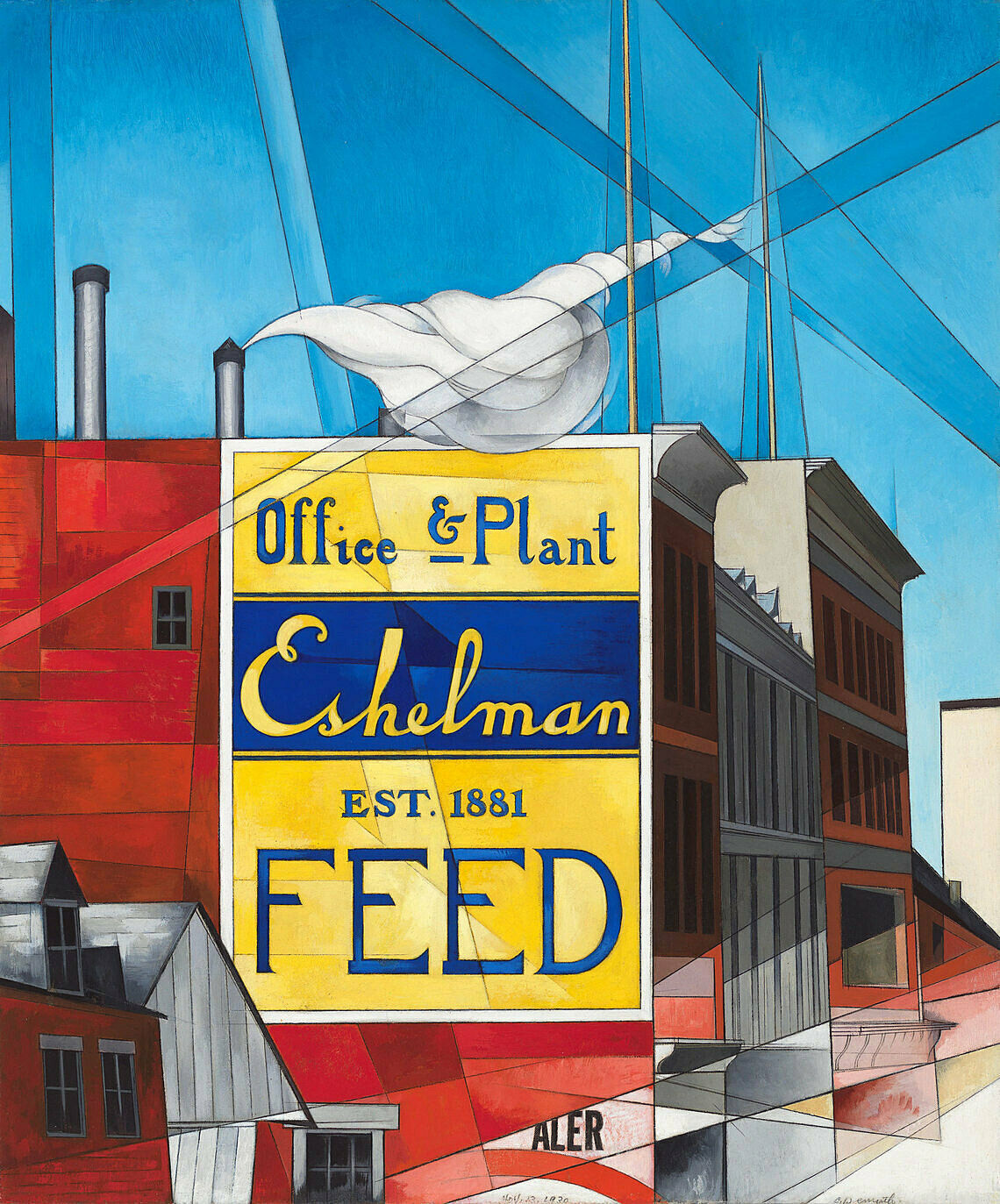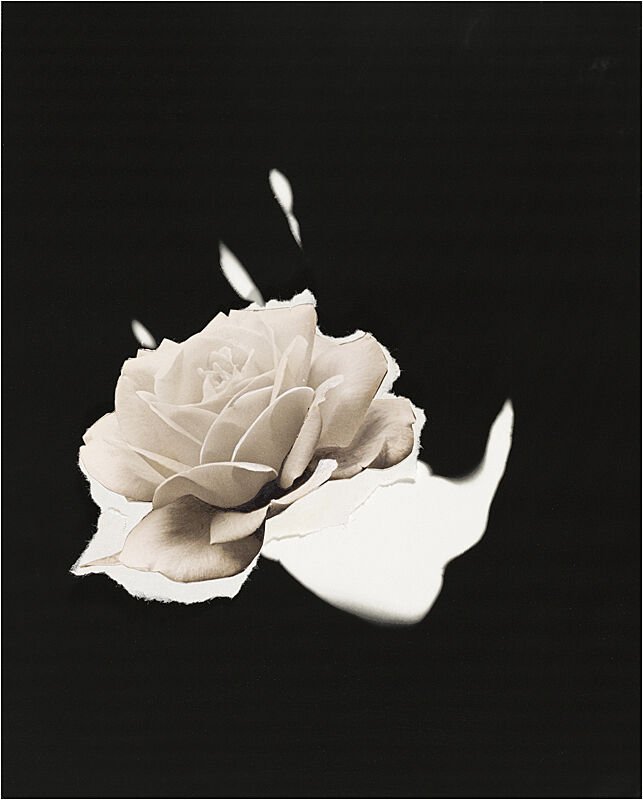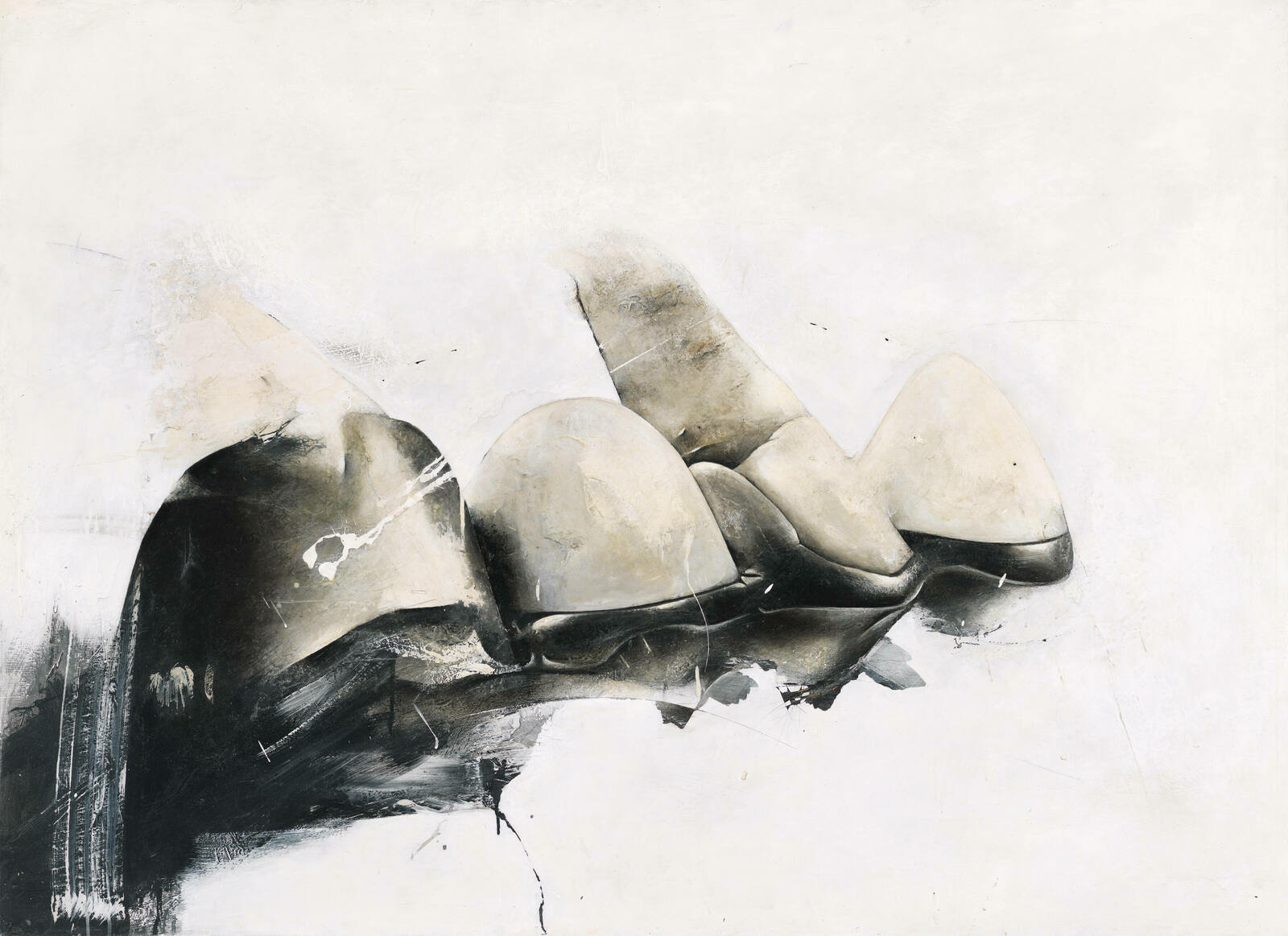One of several works in which Jay DeFeo addresses the act of seeing, either through title or subject matter, The Eyes was inspired by a photograph of the artist. DeFeo later spoke of The Eyes as having “something of a prophetic meaning,” a precursor to her envisioning her signature work, The Rose (1958-66). Apart from personal references, DeFeo's ambitious sense of scale, along with the numerous vertical striations and erasures across the disembodied eyes, make this image of a familiar subject arresting and unexpected. DeFeo inscribed the back of this drawing with a stanza from a poem by Beat poet Philip Lamantia: “Tell him I have eyes only for Heaven as I look to you Queen Mirror of the Heavenly Court.”
On view
Floor 5
Date
1958
Classification
Drawings
Medium
Graphite pencil on paper
Dimensions
Sheet (Sight): 42 × 84 3/4in. (106.7 × 215.3 cm)
Accession number
96.242.3
Credit line
Whitney Museum of American Art, New York; gift of the Lannan Foundation
Rights and reproductions
© The Jay DeFeo Foundation/Artists Rights Society (ARS), New York
Audio
-
Jay DeFeo, The Eyes, 1958
In Where We Are (Spanish)
0:00
Jay DeFeo, The Eyes, 1958
0:00
Narrator: Cuando DeFeo realizó The Eyes, la artista pensaba en la visión en un sentido profundo y casi profético; imaginó lo que vendría después en su labor como artista. Habló de este dibujo en 1980.
Jay DeFeo: Fue un dibujo muy importante para mí. Fue casi una experiencia visionaria, como si viera de adentro hacia afuera.
Narrator: Leah Levy es directora y co-fiduciaria del Fondo Jay DeFeo en Berkeley, California.
Leah Levy: Este dibujo es de los propios ojos de Jay DeFeo. Está realizado a gran escala y usó una fotografía pequeña de sus ojos como modelo. Las marcas verticales son una especie de entelado o velo. No sabemos con certeza lo que estaba pensando o lo que representan, pero de ser un dibujo realista o casi hiperrealista lo transforman en algo que no solo es más misterioso sino también más visionario, en algo más etéreo.
-
Jay DeFeo, The Eyes, 1958
In Where We Are (Kids, Spanish)
0:00
Jay DeFeo, The Eyes, 1958
0:00
Mark Joshua Epstein: Estamos frente a una obra de Jay DeFeo llamada The Eyes, y me pregunto qué les llama la atención acerca de esta obra de arte.
Estudiante 1: Al verse solo los ojos, es como si se hiciera borroso todo lo demás, incluso todo lo que está cerca de los ojos.
Estudiante 2: Yo me fijé que, en el centro, donde tendría que estar la nariz, solo hay como… Me recuerdan a lonchas.
Estudiante 1: Parece que te estuviera mirando directamente.
Mark Joshua Epstein: Jay DeFeo estaba mirando una fotografía de sus propios ojos, la artista estaba mirando una fotografía de sus propios ojos cuando creó esta obra de arte, y me pregunto: ¿creen que contaría como autorretrato aun cuando solo incluye los ojos?
Estudiante 2: Yo creo que sí porque, aunque no se muestre la cara entera, los ojos transmiten mucho de alguna manera.
Estudiante 1: Quizás esté viendo algo triste, porque a veces se compara la tristeza con algo que se ha rajado o roto, así que podría estar mirando algo triste.
Estudiante 2: Creo que, a veces, una fotografía parece muy real, pero a veces si algo no es muy realista o si es bastante realista pero con un toque diferente te hace pensar más.
-
Jay DeFeo, The Eyes, 1958
In Where We Are (Kids)
0:00
Jay DeFeo, The Eyes, 1958
0:00
Mark Joshua Epstein: We’re looking at a piece by Jay DeFeo called The Eyes, and I'm wondering, what do you notice about this art work?
Student 1: To make it just the eyes they kind of blur out everything—like everything even close to the eyes.
Student 2: I noticed that in the middle, like where the nose should be, it’s just kind of like almost, it reminds me of slices almost.
Student 3: It looks like it is just staring right at you.
Mark Joshua Epstein: Jay DeFeo was looking at a photograph of her own eyes—the artist was looking at a photograph of her own eyes when she made this artwork and I'm wondering, do you think it counts as a self-portrait even though it’s just her eyes?
Student 1: I think it does count because even though it doesn’t show your entire whole face, the eyes sort of convey a lot.
Student 2: Maybe she is looking at sadness or something, because sometimes people would compare sadness to something being cracked or broken, so she could be looking at something sad.
Student 3: I think that sometimes like a photograph looks very real, but sometimes if something is not super realistic, or if it’s kind of realistic with a little bit of something like a twist, it gives you more to think about.
-
0:00
Jay DeFeo, The Eyes, 1958
0:00
Narrator: When DeFeo made The Eyes, she was thinking about vision in a deep, almost prophetic sense—imagining what would come next for her as an artist. She spoke about the drawing in 1980.
Jay DeFeo: It was a very important drawing for me to do. It was almost a kind of visionary experience for me, as though I were seeing from the inside out.
Narrator: Leah Levy is Director and Co-Trustee of the Jay DeFeo Trust in Berkeley, California.
Leah Levy: This drawing is of Jay DeFeo's own eyes. It's done at a very large scale, and she used a small photograph of her own eyes as a model for this. The vertical marks are kind of a scrim or a veil. We don't specifically know what she was thinking or what they represent, but they turn it from a realistic or almost super realistic drawing into something that's not only more mysterious, but that's more visionary, that's more otherworldly.
Exhibitions
Installation photography
-
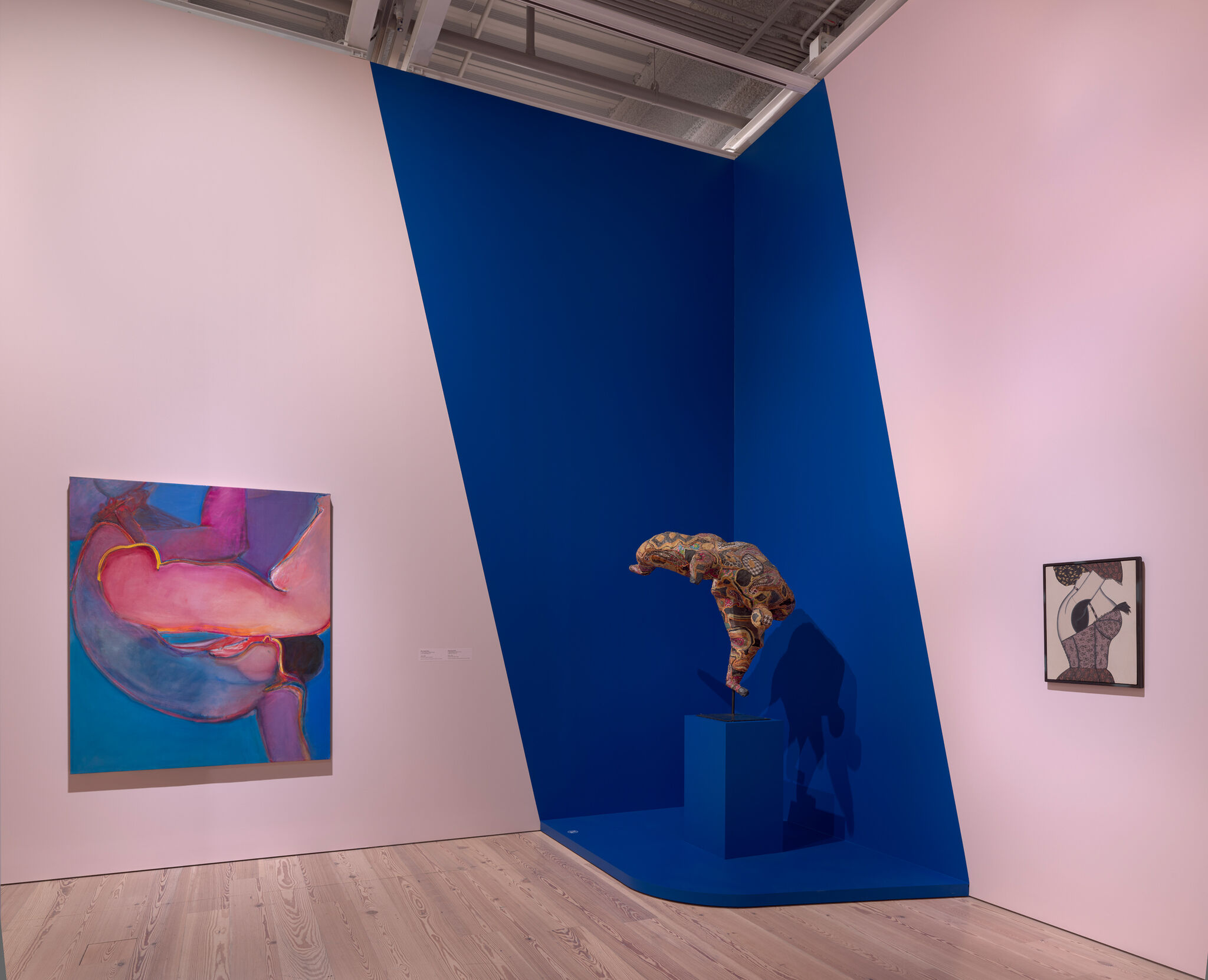

Installation view of Sixties Surreal (Whitney Museum of American Art, New York, September 24, 2025–January 19, 2026). From left to right: Joan Semmel, Untitled, 1971; Niki de Saint Phalle, Vivian, 1965; Christina Ramberg, Shadow Panel, 1972. Artworks © 2025 Joan Semmel/Artists Rights Society (ARS), New York; © 2025 Niki Charitable Art Foundation / ARS, NY / ADAGP, Paris; © Christina Ramberg. Photograph by Ron Amstutz, digital image © Whitney Museum of American Art
From the exhibition Sixties Surreal
-
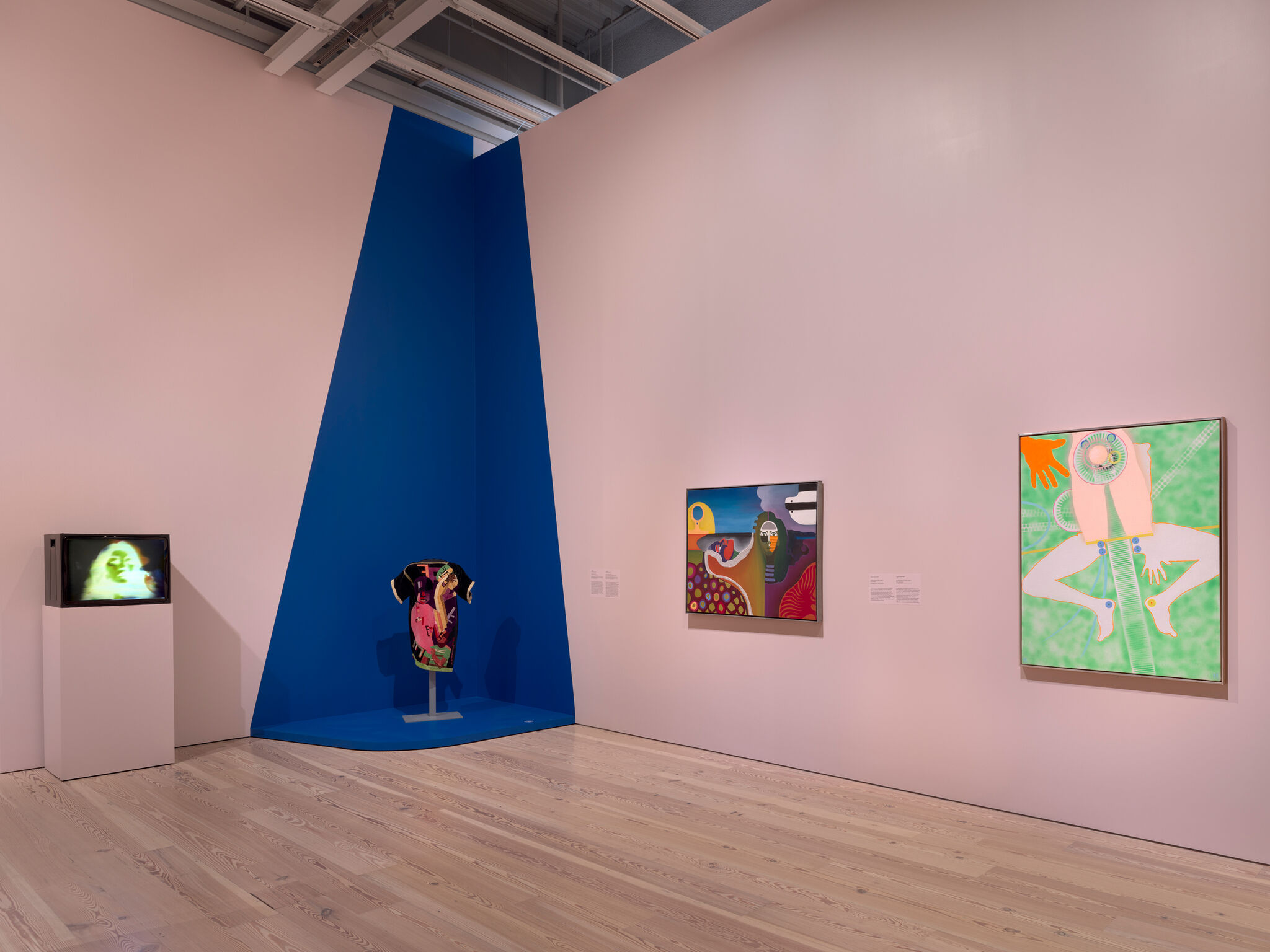

Installation view of Sixties Surreal (Whitney Museum of American Art, New York, September 24, 2025–January 19, 2026). From left to right: Shigeko Kubota, Self-Portrait, c. 1970–71; Jae Jarrell, Ebony Family, c. 1968; Linda Lomahaftewa, Untitled Woman's Faces, 1965–71; Kiki Kogelnik, Gee Baby - I'm Sorry, 1965. Artworks © 2025 Estate of Shigeko Kubota / Licensed by VAGA at Artists Rights Society (ARS), NY; © Jae Jarrell; © Linda Lomahaftewa; © Kiki Kogelnik Foundation. Photograph by Ron Amstutz, digital image © Whitney Museum of American Art
From the exhibition Sixties Surreal
-


Installation view of Sixties Surreal (Whitney Museum of American Art, New York, September 24, 2025–January 19, 2026). From left to right: Barbara Hammer, Schizy, 1968; Senga Nengudi, Down (Purple), Red Devil (soul 2), Drifting Leaves, 1972; Dale Brockman Davis, Arabian Nights, #2, c. 1969–70. Artworks © Estate of Barbara Hammer; © Senga Nengudi, 2025; © Dale Brockman Davis. Photograph by Ron Amstutz, digital image © Whitney Museum of American Art
From the exhibition Sixties Surreal
-
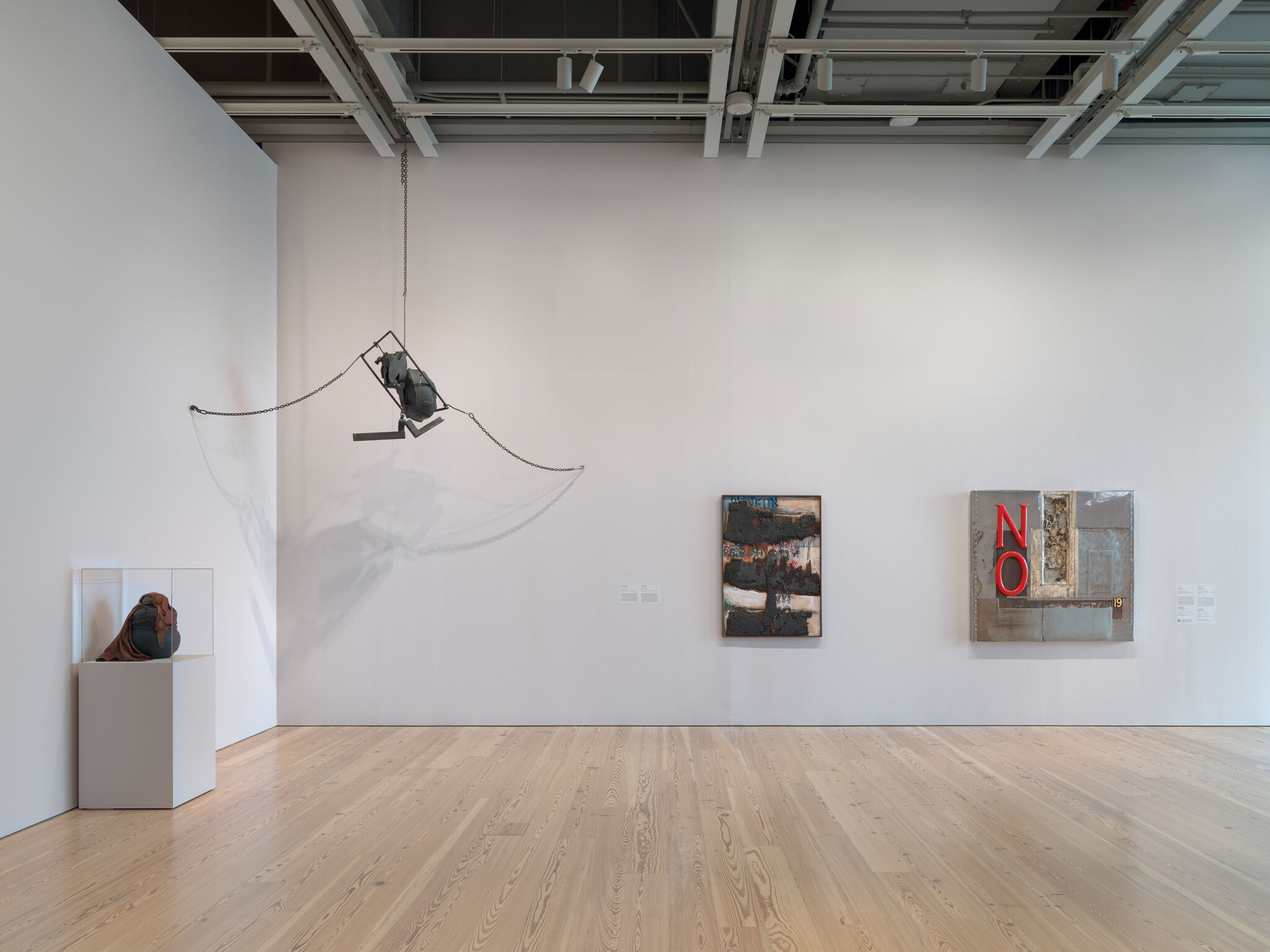

Installation view of Sixties Surreal (Whitney Museum of American Art, New York, September 24, 2025–January 19, 2026). From left to right: Dale Brockman Davis, Arabian Nights, #2, c. 1969–70; Melvin Edwards, Cotton Hangup, 1966; Noah Purifoy, Untitled (66 Signs of Neon), 1966; John Outterbridge, No Time for Jivin', 1969. Artworks © Dale Brockman Davis; © 2025 Melvin Edwards / Artist Rights Society (ARS), New York, New York; © Noah Purifoy; © Courtesy the Estate of John Outterbridge and Tilton Gallery, New York. Photograph by Ron Amstutz, digital image © Whitney Museum of American Art
From the exhibition Sixties Surreal
-


Installation view of Sixties Surreal (Whitney Museum of American Art, New York, September 24, 2025–January 19, 2026). From left to right: Barbara Hammer, Schizy, 1968; Senga Nengudi, Down (Purple), Red Devil (soul 2), Drifting Leaves, 1972; Dale Brockman Davis, Arabian Nights, #2, c. 1969–70; Melvin Edwards, Cotton Hangup, 1966; Noah Purifoy, Untitled (66 Signs of Neon), 1966; John Outterbridge, No Time for Jivin', 1969. Artworks © Estate of Barbara Hammer; © Senga Nengudi, 2025; © Dale Brockman Davis; © 2025 Melvin Edwards / Artist Rights Society (ARS), New York, New York; © Noah Purifoy; © Courtesy the Estate of John Outterbridge and Tilton Gallery, New York. Photograph by Ron Amstutz, digital image © Whitney Museum of American Art
From the exhibition Sixties Surreal
-
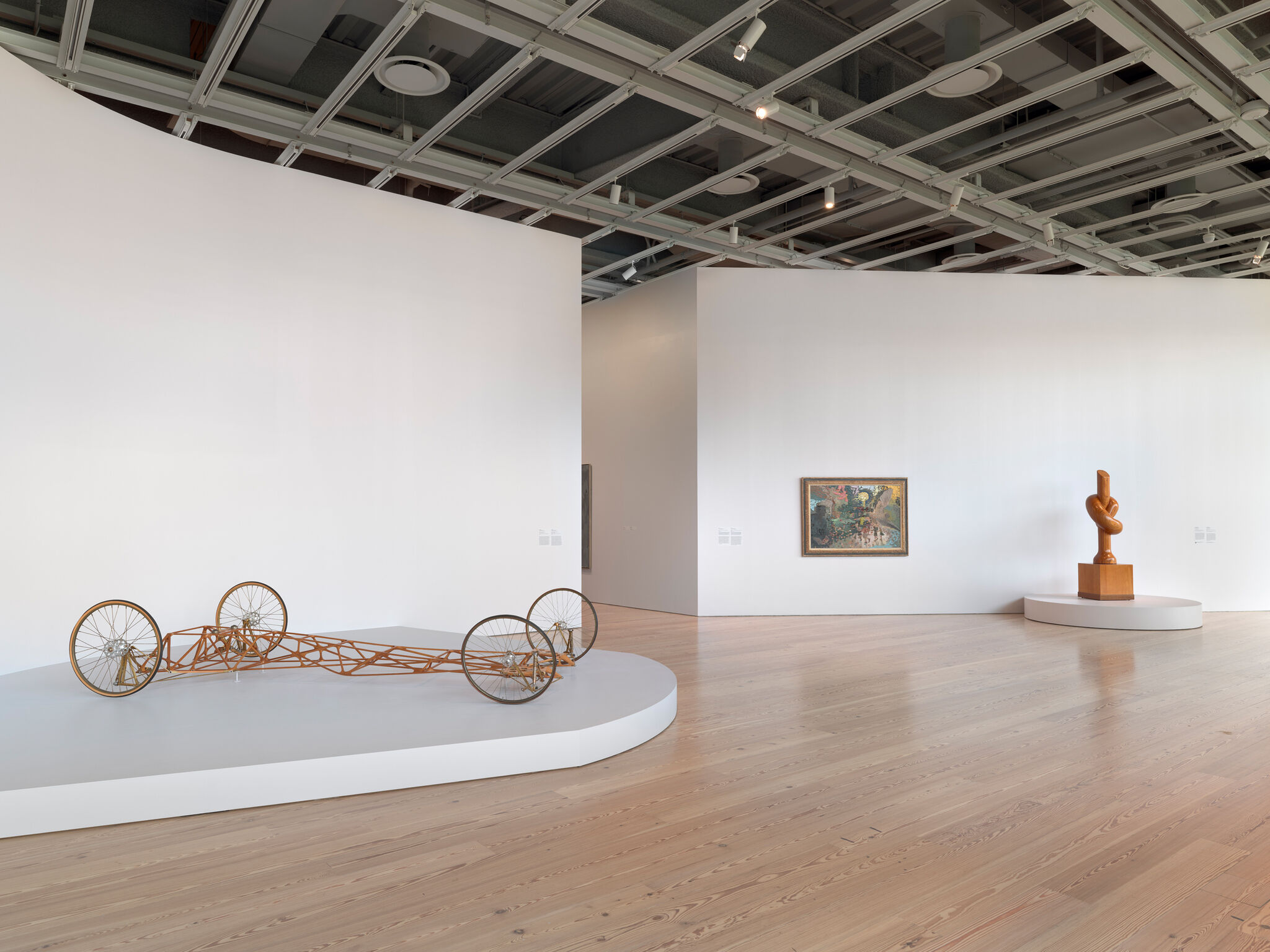

Installation view of Sixties Surreal (Whitney Museum of American Art, New York, September 24, 2025–January 19, 2026). From left to right: Don Potts, My First Car: Basic Chassis, 1970; Jess, If All the World Were Paper and All the Water Sink, 1962; H.C. Westermann, The Big Change, 1963. Artworks © Estate of Don Potts; © JESS -The Jess Collins Trust; © 2025 H.C. Westermann / Artists Rights Society (ARS), NY. Photograph by Ron Amstutz, digital image © Whitney Museum of American Art
From the exhibition Sixties Surreal
-


Installation view of Sixties Surreal (Whitney Museum of American Art, New York, September 24, 2025–January 19, 2026). From left to right: Jay DeFeo, The Eyes, 1958; Robert Smithson, Green Chimera with Stigmata, 1961; Ching Ho Cheng, Sun Drawing, 1967; Barbara Rossi, Male of Sorrows #5, 1970; Wally Hedrick, HERMETIC IMAGE, 1961; Betye Saar, Ten Mojo Secrets, 1972. Artworks © 2025 The Jay DeFeo Foundation/Artists Rights Society (ARS), NY; © 2025 Holt/Smithson Foundation / Licensed by Artists Rights Society (ARS), NY; © 2025 Ching Ho Cheng Estate/ Artists Rights Society (ARS), NY; © Barbara Rossi; © Wally Hedrick; © Betye Saar. Photograph by Ron Amstutz, digital image © Whitney Museum of American Art
From the exhibition Sixties Surreal
-


Installation view of Where We Are: Selections from the Whitney’s Collection, 1900–1960 (Whitney Museum of American Art, New York, April 28, 2017–June 2, 2019). From left to right: Clyfford Still, Untitled, 1956; Barnett Newman, Day One, 1951–1952; Richmond Barthé, African Dancer, 1933; Jay DeFeo, The Eyes, 1958. Photograph by Ron Amstutz
From the exhibition Where We Are: Selections from the Whitney’s Collection, 1900–1960
-
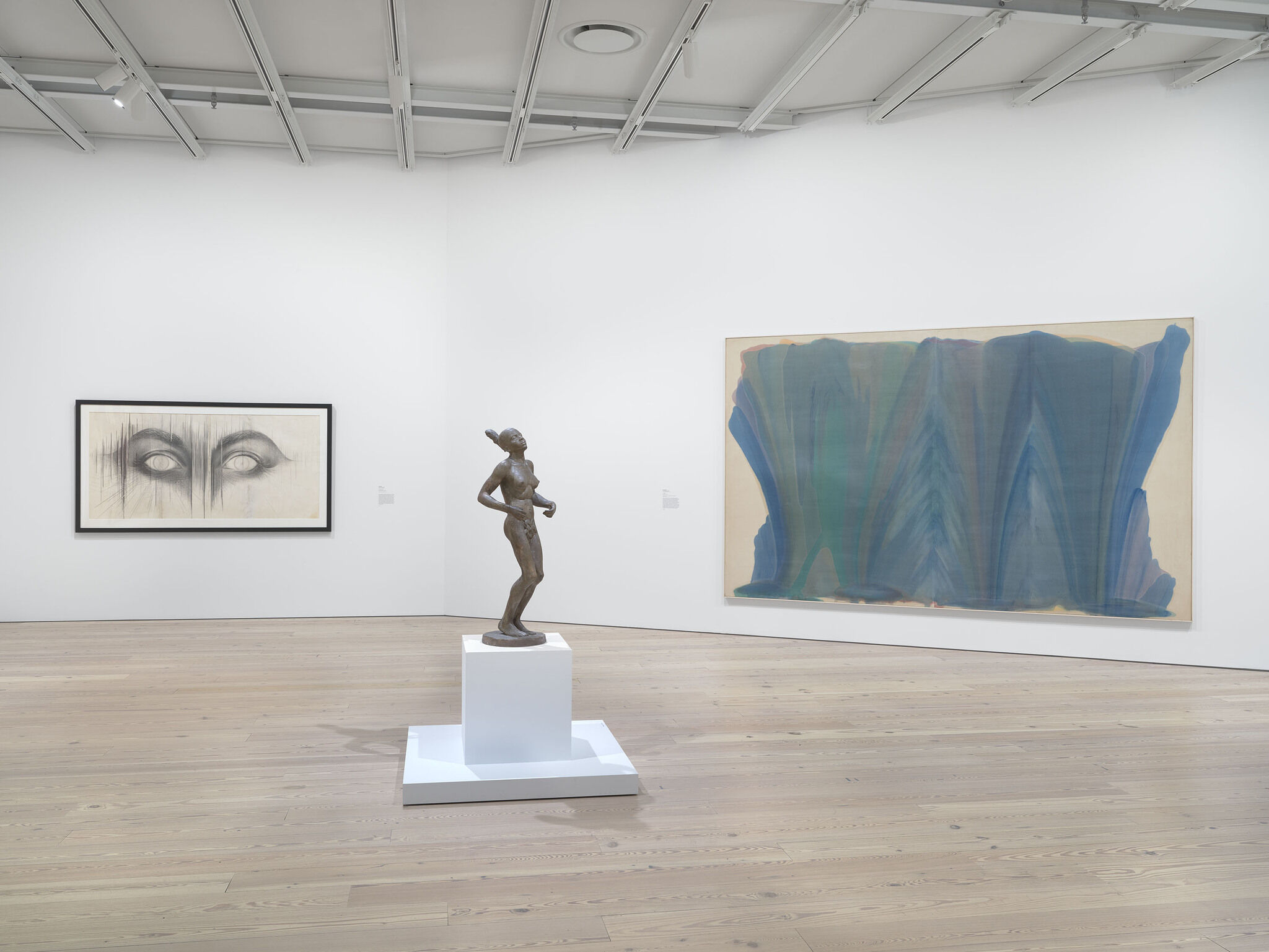

Installation view of Where We Are: Selections from the Whitney’s Collection, 1900–1960 (Whitney Museum of American Art, New York, April 28, 2017–June 2, 2019). From left to right: Jay DeFeo, The Eyes, 1958; Richmond Barthé, African Dancer, 1933; Morris Louis, Tet, 1958. Photograph by Ron Amstutz
From the exhibition Where We Are: Selections from the Whitney’s Collection, 1900–1960


